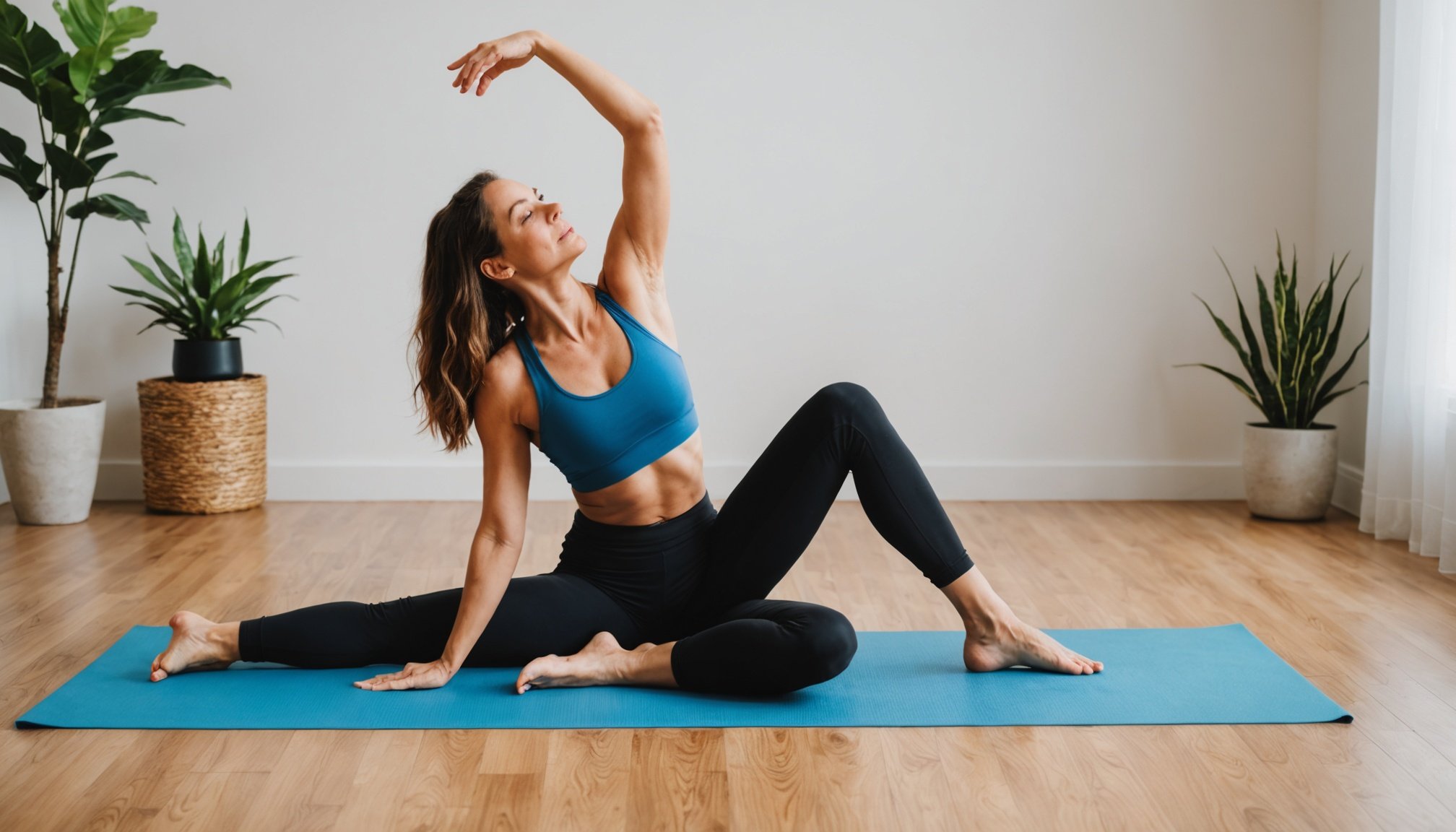Understanding Stress Relief Through Yoga
Stress has become a pervasive part of modern life, affecting both mental health and physical well-being. It often manifests in symptoms like anxiety, fatigue, and even chronic illnesses. To combat these issues, various approaches exist, with one gaining particular popularity: yoga.
As a time-honoured practice, yoga offers a holistic approach to stress relief by integrating physical postures, breathing exercises, and meditation. This combination not only aids in calming the mind but also improves overall body health. Regular yoga practice enhances flexibility, boosts mood, and promotes a sense of inner peace.
In parallel : Creating a Healthy and Productive Home Office: Essential Tips for an Ergonomic Workspace
A key advantage of yoga lies in its adaptability. With countless styles and poses available, yoga can be personalized to meet individual needs, which enhances its benefits for stress relief. Personalized yoga sequences can target specific stressors, providing a tailor-made path to regaining balance and enhancing mental clarity.
Practicing yoga for stress relief involves more than just following movements; it means embracing a lifestyle. The focus on mindfulness helps promote self-awareness and resilience, essential tools in managing today’s fast-paced world. By committing to yoga, individuals can find a sustainable and effective method for improving their mental health and overall wellness.
Also read : Mastering Minimalism: Create a Chic Wardrobe That Elevates Your Style
Steps to Craft Your Unique Yoga Sequence
Embarking on the journey of designing a custom yoga sequence can be both rewarding and transformative. A personalized practice enables you to tailor your sessions to your body’s unique needs and stress triggers.
Assessing Your Needs
Begin by identifying your personal stress triggers and any physical limitations you may have. This self-awareness serves as the foundation for a practice that truly benefits you. Understanding your individual goals for yoga practice is crucial; consider whether you aim for stress relief, flexibility, strength, or meditation. Employ self-reflection techniques, such as journaling or mindful contemplation, to delve deeper into your aspirations and challenges.
Choosing the Right Poses
For beginners, foundational poses such as downward dog or child’s pose offer gentle strength-building. More advanced practitioners may incorporate poses like crow or pigeon. The versatility of pose selection is vital, allowing adaptation for various needs. You can vary poses to specifically address stress-related issues, targeting areas like shoulders or lower back to release tension.
Structuring Your Sequence
When structuring your sequence, consider the flow between poses, ensuring smooth transitions. Balance active and restorative poses to maintain energy and promote recovery. Incorporating breath work and mindfulness not only enhances the practice but also deepens the mind-body connection, leading to a more comprehensive yoga experience.
Yoga Sequences for Different Skill Levels
Yoga offers versatile sequences tailored to various skill levels, ensuring every practitioner finds a routine that suits their needs. For those at the beginner yoga stage, sequences often focus on foundational poses. Poses like Mountain Pose, Downward Dog, and Warrior I are excellent starting points. These poses help newbies develop balance, alignment, and body awareness.
Moving up to intermediate levels introduces a combination of strength and flexibility-focused sequences. Here, poses like Crow and Wheel become central, challenging both balance and strength. Intermediate practitioners benefit from sequences that gradually build these skills while maintaining a connection to foundational practices. Such sequences demand more physical engagement and mental focus, paving the way for the next level.
Advanced sequences are tailored for those seeking deep relaxation and more complex challenges. At this stage, poses like Handstands and Eka Pada Rajakapotasana not only enhance physical prowess but also sharpen mental concentration. These sequences offer intense physical challenges while promoting deeper mindfulness and resilience. Advanced practitioners often find that such sequences push personal boundaries, fostering further growth in their yoga journey.
Enhancing Your Practice with Mindfulness
Incorporating mindfulness in yoga can significantly enhance your practice. During yoga sessions, maintaining awareness of each movement and breath is crucial. Techniques like focusing on your breathing can help keep you anchored. As you inhale and exhale, be aware of how your body moves and reacts, allowing this understanding to guide your practice naturally.
Meditation Techniques
Meditation techniques are essential in embedding mindfulness into yoga. Practicing mindful meditation involves sitting quietly and paying attention to bodily sensations, thoughts, and emotions. This awareness reduces distractions, making it easier to remain focused during yoga. Start with shorter sessions and gradually extend the time as you become more comfortable.
Breath Awareness
The importance of breath awareness in yoga cannot be overstated. It helps create a calm mental space, essential for effective stress relief. By paying attention to your breathing, you can achieve deeper relaxation and improved concentration. Breathing techniques such as pranayama enhance the oxygen flow, benefiting both your mind and body.
Creating a Calm Mental Space
Creating a calm mental space facilitates mindfulness in yoga by encouraging a tranquil environment. Practicing in a quiet, comfortable setting reduces distractions and enhances your awareness. This environment fosters a deeper connection with your inner self, promoting overall well-being and a stress-free practice.
Recommendations for Duration and Environment
Finding the perfect yoga environment can tremendously enhance your practice, making it both more effective and enjoyable. Whether you’re practicing at home or exploring outdoor options, the ideal settings can make a big difference.
Finding Your Optimal Yoga Space
Creating a relaxing home yoga environment begins with selecting a quiet and clutter-free area. Consider using calming colours and soft lighting to enhance the tranquillity of the space. It’s essential to equip your environment with the right props, such as a quality yoga mat, blocks, and straps. These accessories not only support your poses but also help maintain safety during your sessions. Practicing outdoors, on the other hand, offers a unique connection with nature but requires consideration of weather and surface conditions for a comfortable experience.
Setting a Timeframe for Practice
The practice duration is crucial in tailoring your yoga sessions to meet specific goals. For stress relief, shorter, more frequent practices, typically 15-30 minutes daily, can prove beneficial. Meanwhile, longer durations focus on building strength and flexibility. Consistency in routine is key, so establishing a practice schedule that aligns with your lifestyle ensures longevity and maximizes benefits. This balance enhances both the yoga environment and its effectiveness.











